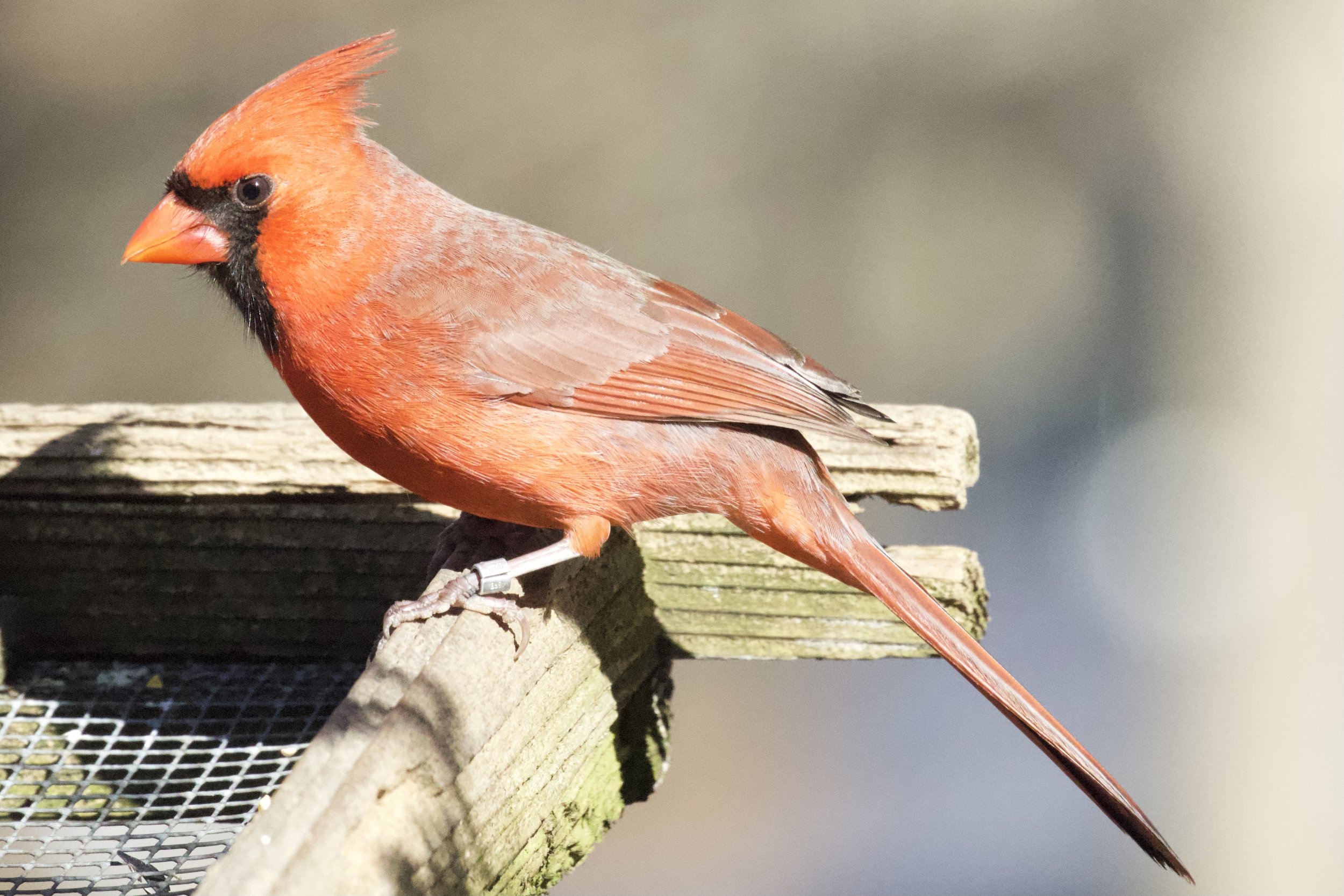Bird of the Month: Northern Cardinal
Male Northern Cardinal. Photo by Colin Dobson.
By Roger Digges, CCAS Vice-President
Probably the most popular and iconic photograph of a bird in winter is one of a male Northern Cardinal, bright red against white snow. Besides the fact that such photos are so stunning, you likely pictured the scene in your mind immediately because there are so many such photographs, and because there are so many cardinals (130 million in the eastern and central US, southernmost Canada, and much of Mexico according to All About Birds). They live here year round, and unlike some birds, they keep their bright plumage throughout the year. Whether it’s 25 below 0 in January or 100 degrees in July, you can find cardinals almost anywhere in Champaign County where there is dense foliage available, including your own backyard.
Before we explore why these birds are so common, let’s take a closer look at the Northern Cardinal. The bird was given the name cardinal by early European explorers and settlers because its brilliant red plumage reminded them of the robes and caps worn by Roman Catholic cardinals. Ornithologists call it the Northern Cardinal because it has, by far, the northernmost range of the three cardinal species. The Pyrrhuloxia (or Desert Cardinal) lives in southern and western Texas, southern New Mexico and Arizona, and much of northern Mexico. The Vermilion Cardinal resides in Colombia and Venezuela.
Like a number of other birds, the Northern Cardinal is sexually dimorphic. While the male’s bright plumage is easily seen, so as to attract the attention of females, female cardinals tend to blend into the surrounding vegetation in their subtle brown plumage with only hints of red in their wings, tail, and crest. This, of course, offers camouflage for females as they incubate eggs on their nest. Both sexes sport thick orange beaks, although the males’ beaks are larger, and males’ crests are bright red.
Northern Cardinals primarily eat seeds and fruit but supplement these foods with insects. They primarily feed their nestlings insects. Cardinals build their nests wedged in the forks of small trees, shrubs, or vine tangles, 1–15 feet above the ground, and hidden in dense foliage. The female and male go location hunting with nest materials and “discuss” the merits of different sites. She does most of the building, although the male sometimes brings nest material, bending twigs she has broken to fit the shape of her body and pushing them into a cup shape. She’ll add softer material to cushion the eggs. It will take the female up to 9 days to build a nest she’ll only use once. She will incubate the eggs for 11–13 days while her mate brings her food, and both parents will feed the nestlings for the next week or two.
It is easy to attract Northern Cardinals to your yard. They love dense undergrowth, shrubs, and trees, and, if you provide that kind of habitat, they may choose to nest not far from your house. We have seen male and female cardinals going back and forth from one of our small trees to gather food and bring it to their young. Cardinals will readily use feeders. We find they prefer black oil sunflower seed.
How are cardinals doing? Great! Because of the growth in suburban and other residential yards, and people providing food in feeders, Northern Cardinals have gradually expanded their range. The North American Breeding Bird Survey shows a 0.32% annual increase in the number of cardinals since 1966. While this bird seems to be compatible with the habitat we provide, please pay attention to the many birds which are not and be their defender.

